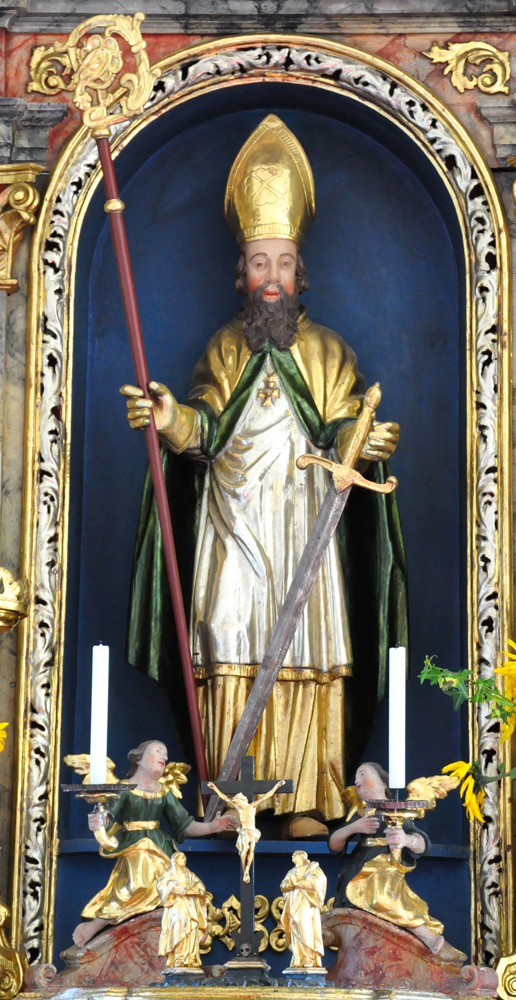But when the malice of the Jews grew, the felons put him out of his honour without cause, and set Ferramund in his chair. And Lambert entered into a monastery, and was there and conversed seven years goodly.
On a night when he arose from prayer, he let wind go behind by ignorance, and when the abbot heard it he said: He that hath done that, let him go out to the cross barefoot.
And anon Lambert went out to the cross barefoot in his hair, hairshirt and was there and went walked in the snow and in the frost when the brethren chauffed them warmed themselves after matins. And the abbot demanded asked where Lambert was, and a brother said that he was gone to the cross by his commandment. He did do call him, and then the abbot and his monks required asked him to pardon them, but he not only pardoned them, but also preached to them the virtue of patience.
And after seven years Ferramund was put out, and St. Lambert was brought again by the commandment of Pepin to his first see, diocese, bishopric and there he shone by word and by ensample in all virtue.
Then two wicked men addressed them against him and began to rebuke and blame him strongly, and the friends of the same bishop slew them.
In that time Lambert began to blame strongly Pepin, for a common woman that he held. And Dodo, a cousin of them that had been slain, and brother of the same common woman, and officer of the king's hall, assembled a great fellowship and assieged besieged all about the bishop's place, and would avenge the death of his cousins on St. Lambert. And when a child came to St. Lambert, which was in his prayers, and told him thereof, he, trusting well in our Lord, thought he should well vanquish them, and took a sword. And when he had remembered himself he threw away his sword, and judged himself better to vanquish in suffering of death, than to leye put his holy hands in the blood of the felons. And this holy man warned his people that they should confess their sins, and suffer patiently death. And anon the felons came upon them, and slew forthwith St. Lambert whom they found in orison and prayer. And when they were gone, some of his men that escaped, bare the body to the cathedral church secretly by water in a boat, and buried it with great heaviness sadness of them of the city, in the year of our Lord four hundred and ten.
Golden Legend Table of Contents
Christian Iconography Home Page

St. Lambert's attribute is a sword, referencing both the sword he threw away because he did not want to shed blood and the sword used soon afterwards to murder him. (See the description page for this image and the page explaining the iconography of images of this saint.)
VORAGINE'S ETYMOLOGY FOR THE NAME LAMBERT
Lambertus is said of lampos in Greek, which is as much to say as burning, and of thus, that is incense. That is to say incense burning to God. Or he may be said of lampas, a lamp, which giveth light in the church. He was incense burning to God by distress of conscience, and for to keep obedience. And he was light in the church by noble predication, and by ensample of good operation.
This text was taken from the Internet Medieval Source Book. E-text © by Paul Halsall. Annotations, formatting, and added rubrics by Richard Stracke. Permission is granted for electronic copying, distribution in print form for educational purposes and personal use. If you do reduplicate the document, indicate the sources. No permission is granted for commercial use.